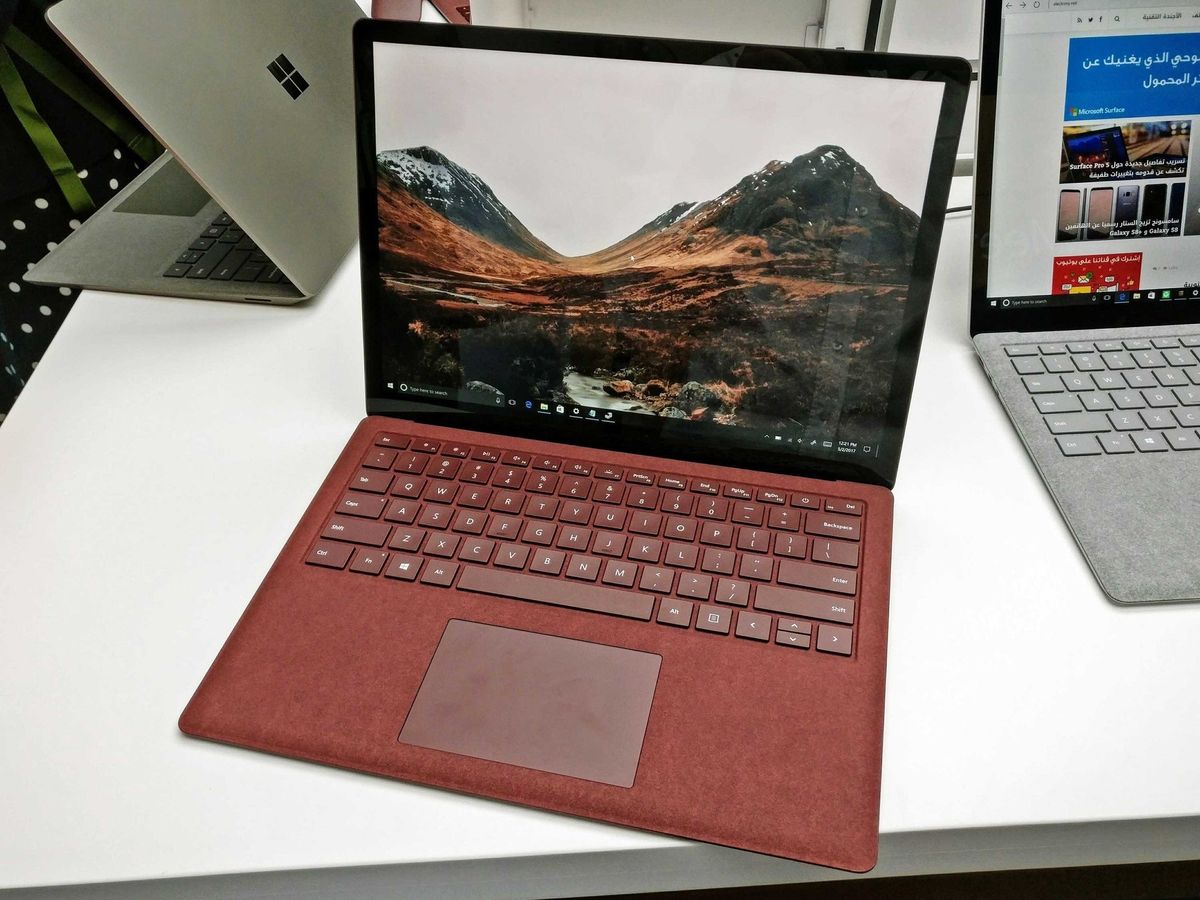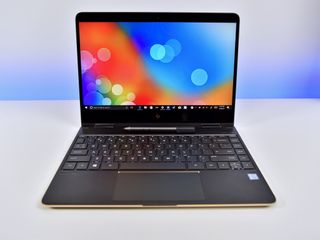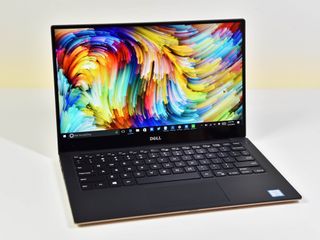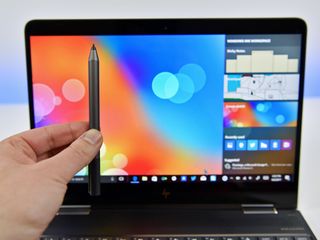Which is the best? Surface Laptop vs. Spectre x360 vs. XPS 13
We pit the Surface Laptop up against the best-in-class HP Spectre x360 and Dell XPS 13 in terms of raw specifications and features. Which is the best value? Let's find out!

Choosing a laptop in 2017 in the Ultra class – that is very thin, light, yet still utilizing a full dual-core Intel Core processor – is becoming increasingly difficult, which is a good problem to have. In fact, knowing what's coming from other manufacturers, we know it's only going to get harder.
Three Ultrabooks – HP Spectre x360, Dell XPS 13 (9360) and the soon to be released Microsoft Surface Laptop – offer some very desirable traits in a modern, compact Ultrabook.
Which is the best? They all are, which means no matter which you choose you will be quite happy. Nonetheless, there are some significant differences between the three that will help guide your decision.

Here is how all three compare in direct specifications and features.
Note: Dell and HP both offer different screen types whereas Surface Laptop is more limited.
| Category | XPS 13 | Spectre x360 | Surface Laptop |
|---|---|---|---|
| Processor | 7th gen Intel Core i3, i5, i7 U-Series | 7th gen Intel Core i5, i7 U-Series | 7th gen Intel Core i5 or i7 U-Series |
| Display size | 13.3 inches | 13.3 inches | 13.5 inches |
| Display resolution | 1,920 x 1,080 (166 ppi)3,840 x 2,160 (331 ppi) | 1,920 x 1,080 (166 ppi)3,200 x 1,800 (276 ppi) | 2,256 x 1,504 (201 ppi) |
| Display type | InfinityEdge touch or non-touch | BrightView LED / IPS LED | PixelSense touchscreen |
| RAM | 4/8/16GBLPDDR3 1866MHz | 8/16GBLPDDR3 1866MHz | 4/8/16GBLPDDR3 1866MHz |
| Graphics | Intel HD 620Intel Iris Plus 640 | Intel HD 620Intel Iris Plus 640 | Intel HD 620Intel Iris Plus 640 |
| Storage | 128/256/512GB, 1TB SSD | 128/256/512GB SSD | 128GB, 256GB, 512GB SSD |
| Battery | 60WHr | 46WHr | Unknown |
| Wireless | Killer 1535802.11acBluetooth 4.1 | Intel 8265802.11acBluetooth 4.1 | Marvell AVASTAR |
| Dimensions | 11.98 x 7.8 x 0.33-0.60 in (304 x 235 x 9 to 15 mm) | 12.8 x 9.03 x 0.41 inches (325.12 x 229.36 x 10.41 mm) | 12.13 inches x 8.78 in x 0.57 inches (308.1 x 223.27 x 14.48 mm) |
| Weight | 2.7lbs (1.2kg) non-touch2.9lbs (1.29kg) touch | 2.7lbs (1.24kg) | 2.76lbs (1.25kg) |
| Ports | 2x USB 3.0SD card1x USB-C Thunderbolt 33.5mm jack | 1x USB-A2x USB-C Thunderbolt 33.5mm jack | 1x USB 3.0Mini DisplayPortHeadset jackSurface Connect |
| Pen | No | Yes (4K option only) | Yes (not included) |
| Price | from $799 | from $989 | from $999 |
Pricing matters
If you are on a strict budget, you will have to make some compromises.

Dell has a much lower starting point at just $799 for the XPS 13. Granted, that's just 4GB of RAM, 128GB of storage and a non-touch 1080p display with a Core i3 processor. What's neat though is you are getting that premium build quality and Infinity Edge display making that $799 model look like a $2,000 version. It's also easy to upgrade the RAM and storage later if you need it.
Get the Windows Central Newsletter
All the latest news, reviews, and guides for Windows and Xbox diehards.
HP has the best all-around value but with a higher starting point. For $1,089 (often on sale at $989) you can grab a Spectre x360 13t with a faster Core i5 processor, 8GB of RAM, and 256GB of storage. That display is also a full-touch 1080p (but no pen support) and the device is a real 2-in-1 offering much more versatility in the long run.
Microsoft's Surface Laptop is priced the highest starting at $999 but that only gets you 4GB of RAM and 128GB of storage. While you can use a pen with the Surface Laptop, the device does not act as a 2-in-1 convertible. The ideal starting point is the 8GB/256GB variant that starts at $1,299, which is about $300 more than the more versatile HP Spectre x360.
All three have outstanding build quality with a combination of metal, carbon fiber, or Alcantara fabric.
Performance should be the same
The HP Spectre x360t, Dell XPS 13 (9360) and Surface Laptop all utilize Intel's 7th generation Core U processors. Those are dual-core and vary in speeds. In theory, all three devices should perform the same, and in our benchmarks, Dell and HP are usually tied. It's not known what the clock-rate is for the Surface Laptop, so we'll have to compare when our review unit arrives.
One interesting change starting in May is the availability of Iris Plus 640 graphics. All three manufactures – HP, Dell, Microsoft – are offering the faster Intel GPU in its Core i7 versions. We haven't tested those GPUs just yet, but they should all bring similar performance.
None of the choices offer discrete NVIDIA graphics, however, due to thermal constraints.
The only consideration here is that HP and Dell offer lower resolution options with Full HD 1080p display. Processors and GPUs pushing fewer pixels results in a zippier experience whereas HP's full 4K option can be a bit slower especially for gaming (but it sure looks good!).
Amazing displays but only one is 4K
When it comes to screens HP, Dell and Microsoft put its best into these devices. That goes even for HP and Dell's lower resolution Full HD displays, which still look outstanding.
If you prefer anti-glare (matte) Dell is your only option at the Full HD 1080p level. It's also the only non-touch option. All the rest are glossy with touch.
All three high-resolution displays (HP's 4K, Dell's QHD+ and Microsoft's PixelSense) offer actual resolutions with non-PenTile designs for those who are concerned.
Pen support
If you are into digital inking or thinking about using it someday, your options are limited.
Dell is completely out as none of the XPS 13's offer inking support. If you want that from Dell, you'll need to go to its XPS 13 2-in-1 and grab the Dell Active Pen.

The Surface Laptop does not come with a Surface Pen, but you can buy and use one with it. The experience, however, is expected to be mediocre only because you cannot tilt the display back very far or use it as a tablet.
Only HP's Spectre x360 13t at 4K offers an authentic digital inking experience. That device turns into a tablet and comes with an excellent N-Trig pen (you can even use the Microsoft Surface Pen if you wish).
Odds and ends
There are some other important distinctions between the devices that could sway your decision.
If you use a web camera often then HP's Spectre x360 is your best bet. That device not only has an appropriately placed web camera (top display bezel) but one that is Full HD 1080p. The Surface Laptop sticks to a decent but lower resolution 720p one. Dell still places the camera on the lower display bezel and is off-center due to the restrictions of the Infinity Edge display. It too is just 720p.
For Windows Hello and bio-metric authentication, all three laptops have options, but only HP and Microsoft use facial recognition via infrared, which is the most convenient. Dell offers an optional fingerprint reader, which works quite well.
Battery life is harder to determine as it will partially depend on what display type you get. HP's 4K display will surely be the least efficient whereas Dell's non-touch Full HD option will likely be the best, especially when paired with its larger battery. Microsoft is claiming a bonkers 14.5 hours even with its high-resolution screen, but without an evaluation, it is just a manufacturer estimate now.
For ports, it's a bit clearer. HP is the most future-proofed with two USB Type-C including Thunderbolt 3, which supports external GPUs (eGPU) like the Razer Core. Luckily, the Spectre x360 keeps a single USB Type-A for legacy devices. Dell is the opposite with just one USB Type-C with Thunderbolt 3 (but no eGPU support) and two USB Type-A. The Surface Laptop is the worst with just a single USB Type-A and a mini DisplayPort.
Only the XPS 13 offers a full SD card slot while Surface Laptop and the Spectre x360 don't have any media card abilities without an external reader.
Conclusion: HP is still the best value
There is no clear winner here as each of these laptops are outstanding. The Dell XPS 13 is near legend and one of the smallest devices in this category. It also has the lowest starting price and likely the best battery life of all three.
The Microsoft Surface Laptop brings its unique 3x2 display aspect ratio, Alcantara keyboard deck, and that beautiful Surface design aesthetic. It's also the most expensive with the fewest features.
HP Spectre x360 with 4K display review
The HP Spectre x360 13t, however, brings the most for the least. Of all three, it is the only one that is also a 2-in-1 convertible offering many more usage scenarios including tablet mode. The Spectre also is the only one with a 4K display option with the highest concentration of pixels at 331 ppi, and it puts an N-Trig pen in the box. Finally, the Spectre x360 is the only one that supports eGPUs through its full-powered Thunderbolt 3 USB Type-C port.
In the end, all three offerings are fantastic, but choose which makes the most send for your budget and needs.

Daniel Rubino is the Editor-in-chief of Windows Central. He is also the head reviewer, podcast co-host, and analyst. He has been covering Microsoft since 2007 when this site was called WMExperts (and later Windows Phone Central). His interests include Windows, laptops, next-gen computing, and wearable tech. He has reviewed laptops for over 10 years and is particularly fond of 2-in-1 convertibles, Arm64 processors, new form factors, and thin-and-light PCs. Before all this tech stuff, he worked on a Ph.D. in linguistics, performed polysomnographs in NYC, and was a motion-picture operator for 17 years.